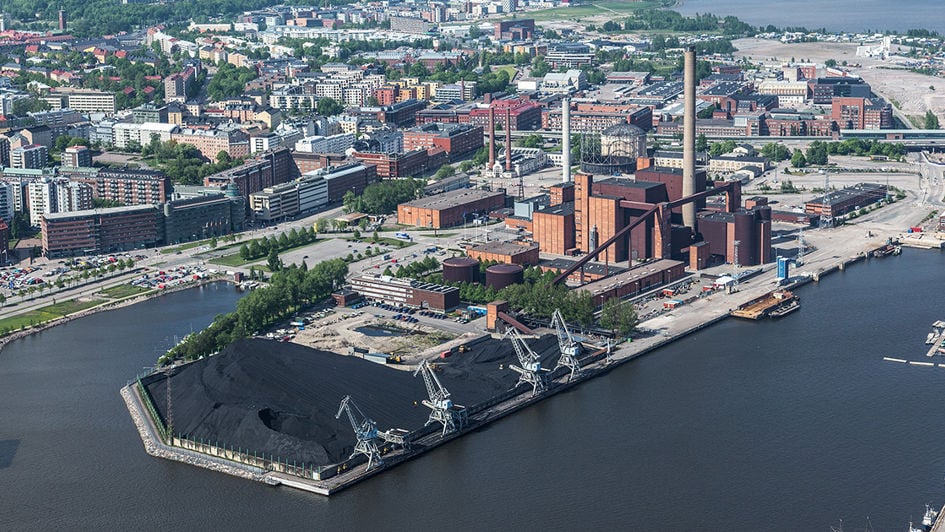
Farewell to the Hanasaari power plant
We are approaching an end of a significant era as the Hanasaari power plant that served the residents of Helsinki for nearly 50 years is being decommissioned. The boilers and steam turbines will shut down on 1 April and, at the same time, Helen’s energy production will take a huge leap in a greener direction.
The power plant B in Hanasaari, which was built next to power plant A in 1974, is an important part of the cityscape. The coal store rising up next to the building is a well known sight for many Helsinki residents. The pitch-black coal heap has divided opinions over the years, but originally it was a solution that removed the grey smoke hovering over the streets of Helsinki in the wintertime.
“The history of the Hanasaari combined heat and power plant is a story of our capital city becoming one of the most advanced cities. We would like to warmly thank all Helen employees who have worked in Hanasaari over the years and bid our farewell to the power plant, feeling sad but nevertheless confident. We are even more proudly looking ahead to the future, where electricity and heat is produced through carbon-neutral solutions respecting the climate and environment. A sustainable energy systems is closer than ever,” says Olli Sirkka, Chief Executive Officer of Helen.
The Hanasaari power plant, which was designed by architect Timo Penttilä, gave rise to great enthusiasm in Finland and abroad upon its completion. During the energy crisis in the 1970s, Hanasaari B was an internationally known peculiarity. For decades, it has produced electricity and heat for Helsinki residents in an effective and reliable manner.
After coal
After the shutdown of the Hanasaari power plant, Helen’s carbon dioxide emissions will decrease by up to 40% and the emissions of Helsinki by 20%. This effect will not be negligible at the national level, as Hanasaari has produced approximately 2% of the emissions of the entire Finland in recent years.
Helen has set a target of making its energy production carbon-neutral by 2030. A significant number of homes in Helsinki are already heated by the Vuosaari bioenergy heating plant, whose main fuel is wood chips obtained as a by-product of forestry. In heat production, we are also increasingly concentrating on utilising different waste and environmental heat with heat pumps. We produce clean electricity with water, wind, and solar power, in which we have been investing heavily in recent years.